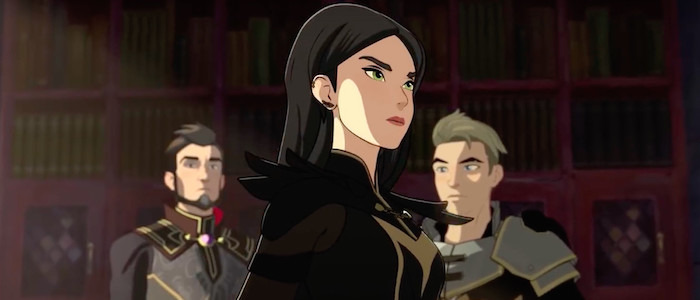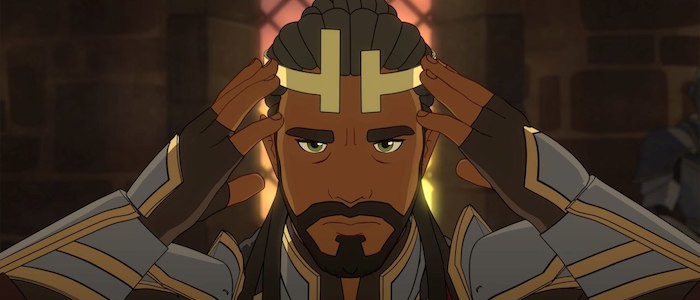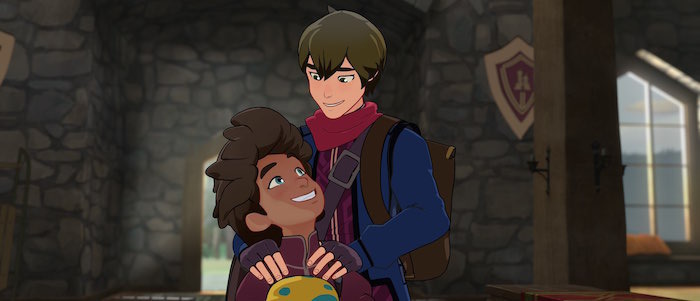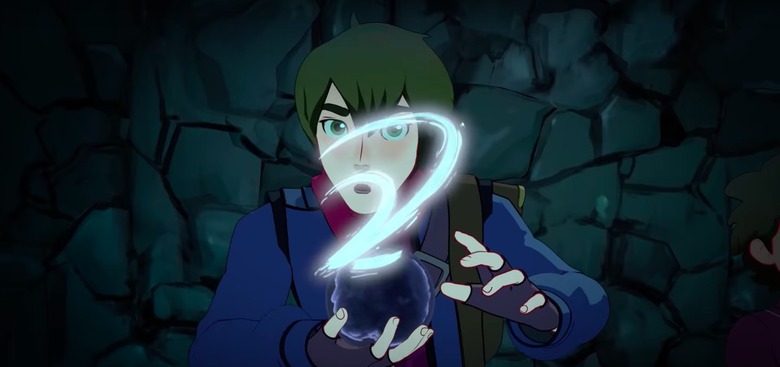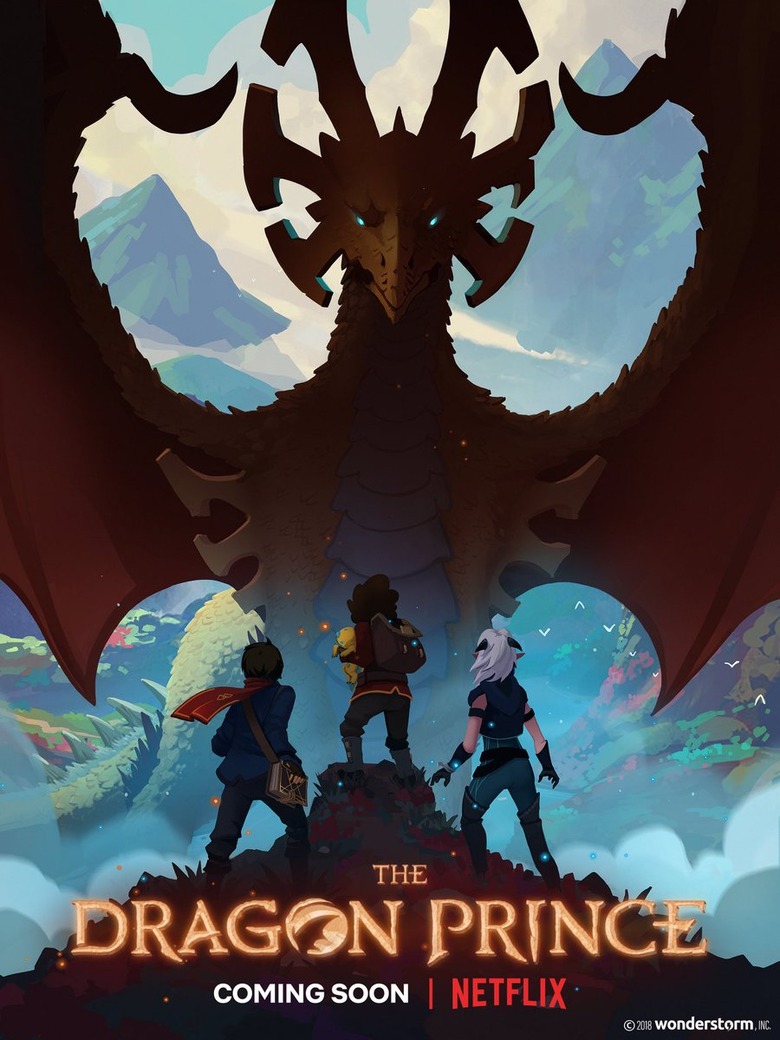5 Reasons To Watch 'The Dragon Prince', The Best New Netflix Show No One Is Taking About
Did you know it's been almost 12 years since Netflix moved their business model from subscription-mail DVD rentals to online streaming? The company pivoted to video (sorry!) in 2007. Why am I bringing this up? Because I can recall, clear as day, having conversations at the time that boiled down to my generation telling older generations that Netflix had just killed cable. Like all Cassandra's, we were ignored.Now, only a dozen years after taking their first steps into the digital world, Netflix is releasing original content so quickly it's impossible — literally — to keep up. Even folks whose job is to watch and critique television all day stare with glazed eyes at the glut of content. Just this past October, the streaming giant released 60 new shows and films. That's almost two per day. The month before that? 54 original releases.So it's no surprise that things get lost in the noise. But what is a surprise, at least to me, is that somehow The Dragon Prince was one of the shows that got lost. As of this writing, the first season has a paltry nine reviews on Rotten Tomatoes. All fresh. But compare that to Chilling Adventures of Sabrina with 87 reviews or Disenchanted with 72 reviews. The Dragon Prince is flying under the radar, which is a travesty. One I'm hoping to remedy by laying out exactly why you need to give the show a go before season two drops in 2019.
From the Creators of Avatar (The Good One)
First of all, The Dragon Prince comes from the minds of Justin Richmond and Aaron Ehasz. The former was the director of the video game Uncharted 3: Drake's Deception and the latter was the head writer of Avatar: The Last Airbender...the animated version, not whatever insanity was cobbled together for the live-action trainwreck.Avatar: The Last Airbender is universally acclaimed, as it should be. The Nickelodeon show made the creation of a fictional fantasy world full of diverse people look effortless. Pulling inspiration from various Asian cultures — Water/Inuit, Earth/China, Fire/China, Air/Tibet —Avatar: The Last Airbender was doing inclusive representation before that phrase had even entered the popular vernacular. It was also a ratings monster for Nickelodeon, with an average episode pulling in around 3.1 million viewers. Since then, the show has been syndicated to over 100 countries and has spawned a sequel series and a spin-off comic.What does all of that have to do with The Dragon Prince? Everything. While watching the first season, any fan ofAvatar: The Last Airbender can see that series' fingerprints all over the Netflix show. Which is the highest compliment I can give.
Deep Lore, Explained Well
For only having nine episodes in its first season, The Dragon Prince does a great job of explaining their world without bogging viewers down in infodumps. Without spoilers, here's a quick rundown of the state of the world when the narrative begins.Long ago, the elves and the humans lived in the same lands. Magic was plentiful and the world was good. Magic came from six primal sources. Similar to the kingdoms in the world of Avatar but not direct parallels. The primal sources were the sky, the stars, the oceans, the earth, the sun, and the moon. Then humans discovered a seventh primal source: magical creatures themselves. By pulling the magic from within the creatures, humans created dark magic. Revolted by this, the elves declared war on the humans and forced them from the land. They've been at war ever since.However, The Dragon Prince takes place a few years after a watershed moment. The lands between the humans and the elves were guarded by the Dragon King. Allegedly, the humans killed the king and destroyed the last living egg aka the Dragon Prince. Obviously, there are some shenanigans about. You don't have to be a pop culture critic to realize both sides of the war have been sold a false bill of goods to keep the war going. The questions then become why? Who benefits?
A Sense of Inclusivity
The Dragon Prince isn't screwing around with its commitment to inclusivity. This is a fantasy world and western "historical" ideals have no place here. The main cast is a blended royal family from different human kingdoms. King Harrow of Katolis (Luc Roderique) is a single dad to his dead wife's son Callum (Jack de Sena) from a previous marriage and his biological son Ezran (Sasha Rojen). King Harrow is a black man and his late wife Sarai was Asian, making both Callum and Ezran biracial. I mention this because the show never does. Not once does skin color matter, as the humans are all busy being racist towards the elves. To be fair, the elves are racist right back at the humans. Instead, The Dragon Prince uses the blended family to examine the dynamics therein.Even the villains and the side characters get a chance to stretch beyond convention. The greatest general in the human army is General Amaya, sister to the late Queen Sarai and aunt to Callum and Ezran. She is also deaf. The Dragon Prince consulted with two American Sign Language interpreters (Lucy Farley and Darcie Kerr) along with organizations that work with and support deaf people to create an authentic and emotional communication. Amaya can read lips and uses her lieutenant Gren (Adrian Petriw) as her interpreter and voice. But if everyone in the scene understands sign language — like her nephews — Gren doesn't always translate. Because there is no need to within the narrative. Your mileage may vary, but I enjoyed the authenticity, even if I had to guess at the exact nature of what Amaya was saying occasionally. As for the human villains, both Claudia (Racquel Belmonte) and Soren (Jesse Inocalla) defy stereotypes. Claudia may be into dark magic, but she's also bubbly and loves puns. Soren might be the muscle, but he's sardonic and wars between being a decent person and obeying commands. That conscience will probably end up being a problem for Viren (Jason Simpson), who is both the Big Bad and the father of both Claudia and Soren.With only nine episodes so far, not much of the elvish dynamic get explored outside of the complicated relationship between Rayla (Paula Burrows) and her mentor/adopted parent Runaan (Jonathan Holmes). The only elves the audience is even exposed to are Moonshadow elves, leaving the other three sub-species — Sunfire, Star, and Sky — shrouded in mystery for now. We also have no idea if there were once Ocean or Earth elves that have vanished or if they never existed at all or perhaps have washed their hands of this never-ending war of attrition.
Complex Characters
I don't even know where to begin here that won't turn this article into a dissertation-length character study. Look, let's just bullet point this for your convenience and my sanity.
It's an Easy Binge
Each episode runs for 26 minutes and there are only nine of them. That slightly under four hours if you include the opening and ending credits of each episode. So do yourself a favor. If you loved Avatar: The Last Airbender, carve out an afternoon sometime soon to watch its spiritual successor. I promise you won't be disappointed.

